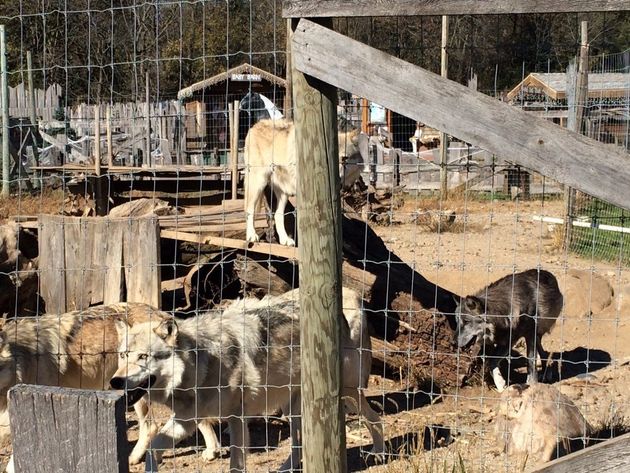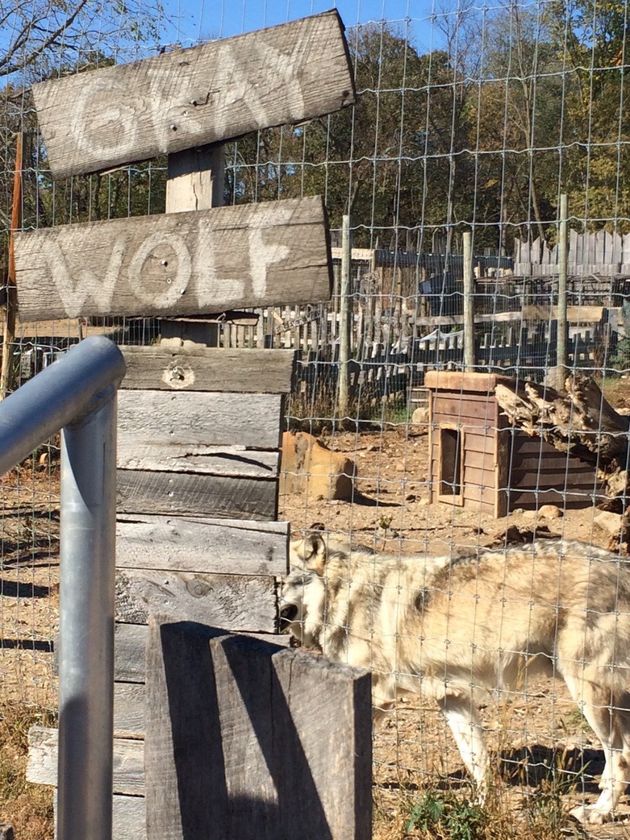An animal advocacy group says it will sue Fur-Ever Wild if it doesn't stop killing the wolves.
An animal advocacy group is
threatening to sue a Minnesota wildlife farm and petting zoo that it
claims is slaughtering gray wolves for their fur.
Fur-Ever Wild, in the city of Lakeville, allows visitors to pet gray wolf pups. But the Animal Legal Defense Fund alleges that the farm kills and skins the wolves to sell their pelts. Gray wolves are protected under the Endangered Species Act, which means it is illegal to kill them.
Fur-Ever Wild, in the city of Lakeville, allows visitors to pet gray wolf pups. But the Animal Legal Defense Fund alleges that the farm kills and skins the wolves to sell their pelts. Gray wolves are protected under the Endangered Species Act, which means it is illegal to kill them.
“We hope Fur-Ever Wild will
agree to cease its wolf-killing operation in the next 60 days but, if
not, we intend to sue to assure the law is enforced,” ALDF executive
director Stephen Wells said in a statement last week.
The group will seek “a court order or settlement agreement that ensures that none of the wolves at Fur-Ever Wild will be killed for their pelts,” staff attorney Christopher Berry told The Huffington Post.
In a civil court deposition in 2012, Fur-Ever Wild owner Terri Petter said that most of her animals are raised for fur. When asked whether she killed animals for the fur or waited for them to die naturally, she responded, “It depends on the fur market.”
The group will seek “a court order or settlement agreement that ensures that none of the wolves at Fur-Ever Wild will be killed for their pelts,” staff attorney Christopher Berry told The Huffington Post.
In a civil court deposition in 2012, Fur-Ever Wild owner Terri Petter said that most of her animals are raised for fur. When asked whether she killed animals for the fur or waited for them to die naturally, she responded, “It depends on the fur market.”
In that deposition, Petter
specifically mentioned pelting wolves, saying she had just pelted two
and that “there will be 25 [pelted] within the next two weeks.” She also
discussed breeding wolves for larger size, which would allow her to
pelt them within a year, instead of keeping them for two years.
However, Petter told The Associated Press in May that she only uses animals for fur pelts if they die naturally. "It's not that all the animals come in and are skinned,” she said. “That's just ludicrous.”
Petter did not respond to a request for comment from The Huffington Post this week, and told TakePart.com she was not commenting on the ALDF case because someone had burned down one of her facility’s buildings. (She did not elaborate on whether she believed the arson was related to the advocacy group's allegations.)
However, Petter told The Associated Press in May that she only uses animals for fur pelts if they die naturally. "It's not that all the animals come in and are skinned,” she said. “That's just ludicrous.”
Petter did not respond to a request for comment from The Huffington Post this week, and told TakePart.com she was not commenting on the ALDF case because someone had burned down one of her facility’s buildings. (She did not elaborate on whether she believed the arson was related to the advocacy group's allegations.)
The ALDF is pointing to the annual game farm activity reports that
Petter filed to the Minnesota Department of Natural Resources as
evidence that Fur-Ever Wild has been slaughtering wolves more recently
than 2012. In her report for the 2012-2013 year, Petter notes that she
started with 31 wolves, and that 33 wolves were born and 24 died during
the year. Six wolves were also sold that year, bringing her number at
the end of the year to 34.
In the 2013-2014 report, filed this past February, Petter states that her facility began the year with 38 wolves. (It's unclear how she started with four more wolves than she ended the previous year with). Nineteen wolf pups were born during the year, and 19 wolves died.
The wolf deaths are recorded under a category called "Number of deaths (…butchered for consumption)." Capt. Alex Gutierrez of the Minnesota DNR explained that this designation encompasses all deaths, including natural deaths and intentional killings.
Berry is skeptical that all of the wolf deaths Petter recorded were natural. “If that many wolves are dying of natural causes then there is a very serious problem at Fur-Ever Wild that goes well beyond the pelting allegations,” he said.
The attorney said most people visiting the facility are likely unaware of what is happening to the animals. “The
average person going to Fur-Ever Wild would not think that it could be
killing animals and harvesting their fur for money," he said.
USDA inspection records from November indicate that all wolves at the facility are gray wolves.
Fur-Ever Wild has a number of other animals -- including bobcats, foxes, lynx and opossums -- though Berry noted that killing those animals for fur would not be against the law.
In the 2013-2014 report, filed this past February, Petter states that her facility began the year with 38 wolves. (It's unclear how she started with four more wolves than she ended the previous year with). Nineteen wolf pups were born during the year, and 19 wolves died.
The wolf deaths are recorded under a category called "Number of deaths (…butchered for consumption)." Capt. Alex Gutierrez of the Minnesota DNR explained that this designation encompasses all deaths, including natural deaths and intentional killings.
Berry is skeptical that all of the wolf deaths Petter recorded were natural. “If that many wolves are dying of natural causes then there is a very serious problem at Fur-Ever Wild that goes well beyond the pelting allegations,” he said.
USDA inspection records from November indicate that all wolves at the facility are gray wolves.
Fur-Ever Wild has a number of other animals -- including bobcats, foxes, lynx and opossums -- though Berry noted that killing those animals for fur would not be against the law.
“The activist effort was fueled in large part by public indignation over the compelling evidence that Fur-Ever Wild was killing its animals for fur,” Berry said.
source






No comments:
Post a Comment